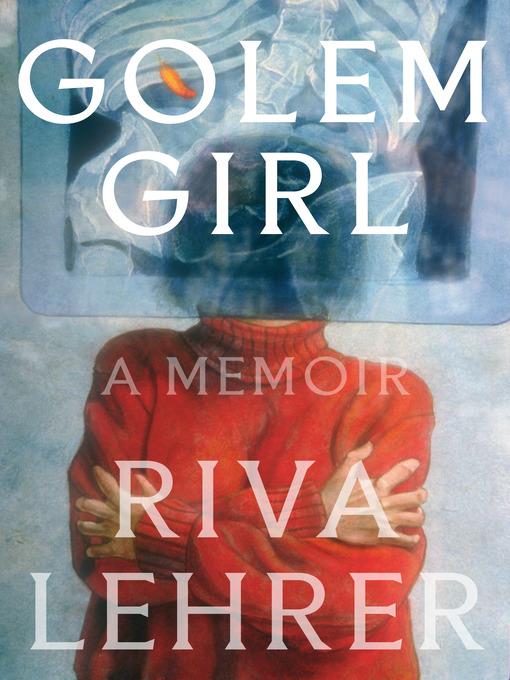
Golem Girl
A Memoir
کتاب های مرتبط
- اطلاعات
- نقد و بررسی
- دیدگاه کاربران
نقد و بررسی

August 10, 2020
Painter Lehrer applies the same unflinching gaze for which her portraits are known to a lifetime with spina bifida in this trenchant debut memoir of disability and queer culture. Born in 1958, Lehrer was among the first to benefit from a surgical breakthrough that enabled doctors to save the lives of newborns with her condition. In the book’s first half, Lehrer recounts finding uninhibited joy with other disabled children at Cincinnati’s Condon School, as well as some unnecessary and ultimately harmful medical procedures she endured. At 21 and living in Chicago, she discovered an exuberant sexuality—one she believed wasn’t possible for her—and grappled with feeling marginalized due to her queerness. The book’s second half, however, loses some of the intimacy as Lehrer adopts a more didactic tone to describe a succession of relationships and document the rise of her career as an artist and the way her work explores the intersections of gender, sexuality, and disability (she includes photos and her own illustrations throughout). Lehrer notes that “international debates (such as those in Belgium and the Netherlands) persist over whether to treat infants like me at all,” and observes that “disability is the great billboard of human truth.... Add it to any discourse, and we can see what humanity truly values.” Readers will be sucked into Lehrer’s powerful memoir.

Starred review from September 1, 2020
In the Jewish tradition, a golem is a clay figure brought mystically to life, as when Rabbi Judah Loew ben Bezalel's golem defended the Jewish population against anti-Semitic attacks in sixteenth-century Prague. As a girl, artist, writer, and disability activist Lehrer, born with spina bifida (an incomplete closing of the spine), imagined herself as following in a long line of golem-like figures, from the Bride of Frankenstein to Gollum of Tolkien fame. Lehrer describes at length her countless surgeries, ongoing struggles with the condition, and the toll it takes on both her physical and emotional life. She also writes about her complicated relationship with her mother, who had her own serious health issues which Lehrer had to contend with when she was still a half-formed youth. For Lehrer, the typical rites of passage into adulthood were inevitably fraught with tension and anxiety, including navigating relationships with both men and women. When attending what was then the Randall J. Condon School for Crippled Children in Cincinnati, she felt accepted; but once she left its safe confines, she was considered a freak. It is a topic she returns to often in this sometimes disturbing but often darkly humorous memoir illustrated with Lehrer's artwork, a chronicle of a free spirit who finds solace and purpose in creating art that represents the socially challenged body.(Reprinted with permission of Booklist, copyright 2020, American Library Association.)

Starred review from October 1, 2020
An artist born with spina bifida shares her story and her paintings with grace and humor. "What's wrong with her?" As a child, writes Lehrer, when a stranger would callously ask that question, "to my dismay, Mom would provide all they'd need to win the vacation package and the new Cadillac. She laid out the details of spina bifida, its causes and effects, as if deputizing a city-wide cadre in case I had to be rushed to an emergency room. For me, this kind of visibility was like being scraped along the sidewalk." Lehrer, whose paintings of what she calls "socially challenged bod[ies]" hang in the National Portrait Gallery of the Smithsonian and many other museums, narrates her difficult childhood with an eloquence and freedom from self-pity that are every bit as powerful as those of Lucy Grealy in her Autobiography of a Face (1994). Remarkably, Lehrer, now 62, found a way to survive endless surgeries (many of them completely bungled) and irremediable pain to create a successful life--one that readers will relish learning about. Her evolving self-awareness as an artist, a disabled person, and a woman with a complicated sexuality are well-explored, and her prose ranges from light and entertaining to intellectually and emotionally serious--and always memorable. In explaining a period when she took up painting beds, she writes, "Beds are crossroads, where impairment and sexuality intersect, the mattress a palimpsest of ecstasy and hurt." The memoir is illustrated with photographs of family and friends and color images of Lehrer's paintings. In an appendix--a bonus book within the book--she goes back to each of the portraits and shares anecdotes about her process and her interaction with the subject, often including that person's own account. In one of her series, The Risk Pictures, Lehrer leaves the subject alone with the canvas for an hour and instructs them to alter it however they want. An extraordinary memoir suffused with generosity, consistent insight, and striking artwork.
COPYRIGHT(2020) Kirkus Reviews, ALL RIGHTS RESERVED.

























دیدگاه کاربران